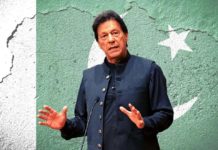Disclaimer: The Eqbal Ahmad Centre for Public Education (EACPE) encourages critical and independent thinking and believes in a free expression of one’s opinion. However, the views expressed in contributed articles are solely those of their respective authors and do not necessarily reflect the position or policy of the EACPE.
I don’t like Lahore. Yes, it’s a city that is rich in heritage, literature and culture, but I don’t like it. I’ve lived here for over 20 years and still it hasn’t grown on me.
In 2016, I took a tour of the Walled City, as part of their ‘photo walk’ initiative. We started at Delhi Gate, at around 10 in the morning, and the tour was to conclude at the Badshahi Masjid. From the minute I entered the famous gate, the jharokas and carved balconies caught my attention. Heritage sites were still under renovation, so there was not much to see. The narrow streets were packed with stalls of fresh spices, handicrafts, khusas, kolhapuri chappals, and bridal dresses etc.
The pace at which I was walking and taking pictures, I did not realise that I had drifted away from the group. Amidst the unfamiliar faces, I frantically called Tahir, my husband-to-be, and asked what I should do.
In his signature calm tone, he asked for the exact location where I was at. “I can see the minaret of a mosque,” I replied. “Keep walking on this road. Once you reach the end, make a left and, after a short walk, you’ll be at the front door,” he guided me.
Lahore is poorer without Tahir, the man who loved and owned his roots in the heart of the Walled City.
Following his instructions, I finally reached the majestic Masjid Wazir Khan. Tahir stayed with me on call throughout, telling me about the artwork, history and his childhood memories that he held so dear to him. Then he asked me to check out of the gorgeous, wooden, carved pulpit (where the imam sits during his sermon). He recited the lines on call: “This pulpit was gifted by His Excellency Lord Curzon of Kedleston, Viceroy and Governor General of India, to Masjid Wazir Khan, as a souvenir of his first official visit to Lahore in April 1899.”
Like always, Tahir amazed me with his sharp memory.
From there on, up to Badshahi Masjid, he continued to guide me, educating me on the history of the place, and also telling tales out of his early years spent in these narrow streets. He also recalled how safe those times were and no one bothered if a woman was loitering unaccompanied.
On his next trip to Lahore, we took another tour of the Walled City. Tahir took me to see his childhood house in Kucha Kakezai (Kakezai being a Pashto name which means ‘young people’, popularly known for their tempers). He was proud of his roots and often teased me by saying, “Rang charh gya hai Kakezaiyyon ka!” (You’ve taken after the Kakezais), every time I lost my temper.
Over the next couple of years, he showed me the Lahore I hadn’t seen before. I distinctly remember when I had to cover the government’s polio drive for a publication, Tahir drove me all the way to Budha Ravi (when he first told me the name, I was in fits).
On another occasion, I was investigating a story on the demolition of houses for the Orange Line train and ended up in a shrine. When I told Tahir about it, all he said was, “Mauj Darya ne bhi bula liya!” (So, Mauj Darya – a saint in Mughal Emperor Akbar’s time – also summoned you!).
This year has been different. Only I didn’t know that a time would come when Lahore would cease to be the same. No platefuls of haleem from Regal Chowk, no late-night driving after having steaming gulab jamuns from Ghalib Market, no brunches at Mohammadi’s Nihari, or a cigar and cup of tea at the PAF Falcon Club in foggy winter nights. Also, no dressing up in his favourite tweed coat stitched by the late Master Mushtaq in Islamabad, which Tahir paired with a light muffler; and no cribbing about how the winters reminded him of his service days at Siachen.
I shall miss the twinkle in those eyes, with tears forever lurking behind his glasses and a smile ready to warm your heart, whenever he talked of Lahore so affectionately.
As winter approaches, my relationship with Lahore is likely to become more complicated. Lahore is poorer without Tahir – he was a man who loved and owned his roots in the heart of the Walled City. He was right, rang charh gya hai, as I have embraced androon Lahore as he did. I shall forever keep myself warm with the memories we weaved together in those narrow streets. But loneliness will sting forever, like the dead-cold winter breeze. Maybe that’s why I don’t like Lahore now.
A contributed article by R. Umaima Ahmed









